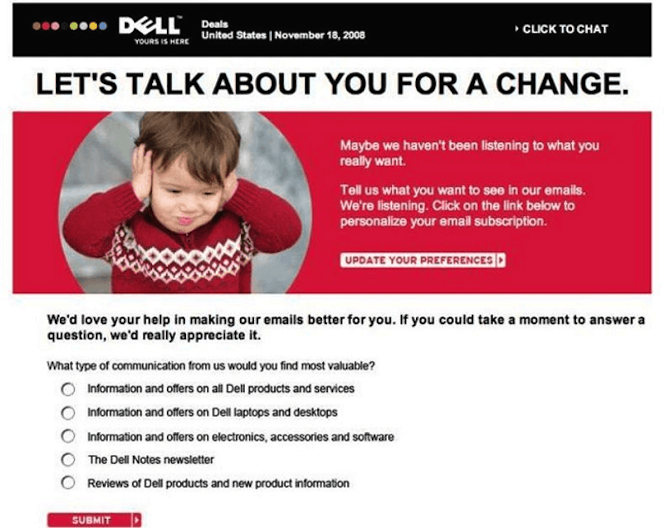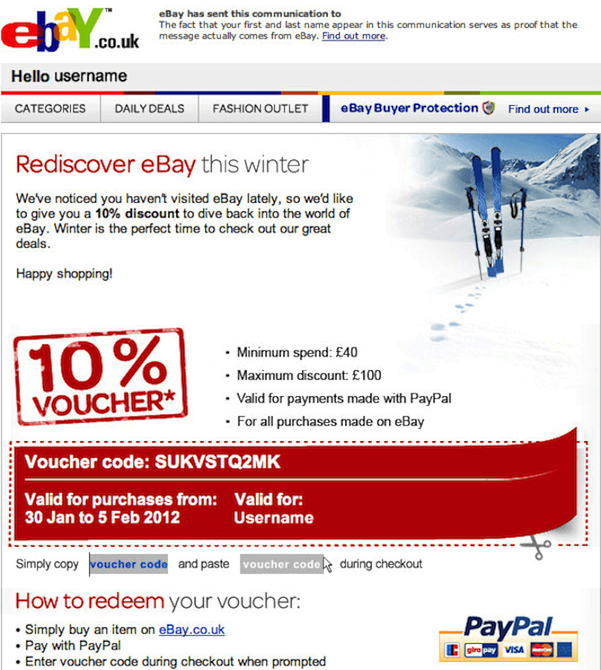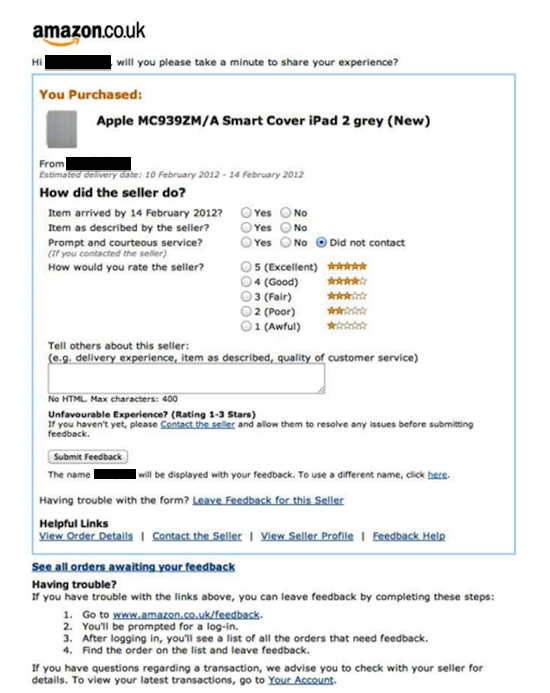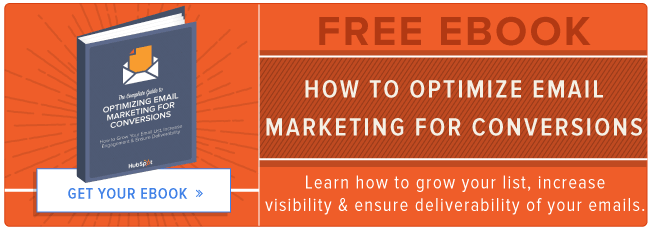
Every single day, 196.3 billion emails are sent or received. That’s about 26 emails per day for every single human being on the planet — and since, of course, not everybody on the planet is online, the number of emails per head per day is actually a lot higher.
The frequency of email sends, and the pressure many people feel to check their email constantly, makes it an appealing channel for marketers trying to reach their customers and prospects. Along with its pervasive reach, email also offers the highest ROI on marketing dollars among all other digital channels, making it the darling of marketers worldwide.
In this post, I’ll share with you email marketing ideas that have worked for me so you can get the best returns from your email campaigns.
Understand Your Brand’s User Experience
User Experience (UX) is the comprehensive experience a customer receives through interactions with all the various touch points of a brand. You and your colleagues have the power over whether you create a great or horrible user experience for your customers.
Fitbit, for example, is excellent at delivering on its promise on all customer touch points, including email marketing. Take a look at their website:

Clean lines, flat design, bright colors with a matte look dominate the website — very similar design lines to the one its product’s user iterface is built around. For even more consistency, Fitbit also perfectly matches these design nuances in its email marketing:

Intuitive, simple, and consistent across the board.
While most people think of UX as an experience on a website or inside a piece of software, remember that the concept wasn’t born with the advent of computers. For many brands, UX has an in-person component as well. Disney is a good example of excellent, in-person user experience: At Disneyland in California, they built a beautiful replica of Sleeping Beauty’s castle that customers can walk through to relive the movie in the flesh. But that’s not all: For customers who are unable to walk or climb stairs, they also developed a high-definition virtual walkthrough experience using CGI and SFX.
Reengage Inactive Subscribers
Inactive customers typically account for about 60% of a business’ total subscriber base. But, unfortunately, there’s only so much you can do to encourage them to interact with your website or product — someone who’s stopped buying from you usually has reasons for this change in behavior that are impossible to fix via a one-way marketing campaign.
On the other hand, the two-way nature of email communication makes it the perfect, personalized medium for reaching out to inactive users. Through email, you can: 1) understand why they stopped buying from how (and how you can fix it); 2) offer them immediately and sustained incentives to revive their association with your brand (by way of special one-time discounts, coupons, or exclusive service options designed expressly for this purpose).
For example, Dell reaches out to its inactive subscribers to understand the reasons for their prolonged silence, so the folks over there can take corrective measures:

eBay UK does a great job of putting together a personalized email that conveys a clear and tangible benefit to an inactive customer, along with a short offer expiry window to encourage immediate purchase:

Leverage Coupons for More than Just Sales
Traditionally, coupons have been looked upon as quick fixes to boost sales; a wrapper to throw money at customers who’ll in turn grab the bait right away. But the temptation of a high value coupon can help promote specific behaviors that are over and above an immediate sales. Try including coupons in your email marketing to encourage users to take the following actions:
1) Subscribe to an email list.
An email list is your own, focused audience of users that are already aware of your product — and, in many cases, have already used your product. Building a strong email list is a priority for most businesses that want to communicate regularly to a captive audience.
An easy way to grow your email list is to offer users an incentive to subscribe. Offer discount coupons to fans on social media, or even on your own website, for sharing their email address with you. Besides strengthening your email list, coupon recipients are also incentivized to make a (discounted) purchase.
2) Complete an abandoned purchase.
According to research by the Baymard Institute, nearly 68% of all shopping carts are abandoned. Email is an excellent tool for retargeting abandoned cart shoppers, and can dramatically increase the chances of closing the sale. A study from Remarkety found that when coupons are used in retargeting emails sent to abandoned cart customers, clickthrough rates double and conversion rates are four times higher.

3) Promote a new channel from within email.
Just as new product trials are easier when there is an incentive attached, you can promote a new channel by offering discounts that can be redeemed only via said channel.
Which channels should you promote? These days, mobile coupons are most common, and many expect them to help grow the popularity of mobile shopping in the coming years. According to Integer, the number of users who reported using a mobile device to redeem coupons (25%) is almost equal to the number of users that redeem coupons at physical stores (27%).
4) Build loyalty
Finally, yes: Coupons can be used for building brand loyalty (as well as subscriber loyalty). Loyalty programs that offer deep discounts for sticking with the brand is one way of “buying” user loyalty. Many brands even charge the user a small fee to participate in their loyalty programs to make sure only serious users are using them. Amazon Prime, Amazon’s wildly successful membership program that costs $99 per year, is a great example.
Alright, back to more ideas for making the most of your email marketing campaigns.
Build Reviews into Your Emails
In all likelihood, you’ve heard of the power of social proof, product reviews, and testimonials. A study by Zendesk and Dimensional Research found that 88% of customers make purchase decisions online based on reviews left behind by other customers. With such an overwhelmingly large number of online shoppers affected by reviews, it’s shocking to see the number of brands that don’t have a dedicated marketing program aimed at collecting testimonials from every single person who buys from them.
Don’t miss out on this “sitting duck” opportunity for conversions. Set up a dedicated email campaign that targets each and every customer and requests feedback from them on their purchase experience and the product or service quality.
But don’t force users to go your website, log into their accounts, and then leave behind their reviews — chances are, that’ll cause a huge drop in participation. Instead, offer a place for them to leave feedback inside your original email, like Amazon does here:

Anticipating glitches that might arise with certain email clients, Amazon also offers a link to its website, where the user can click through and leave behind their thoughts if they so choose.
Cross Leverage Email & Social Media
However powerful email and social media are in their own right, there are still some shortcomings that each one suffers from. Email marketing is totally dependent on the number of users who choose to open the email and click through to the content. It’s also not an immediate response tool. Social media, on the other hand, is unable to educate users about the wide variety of topics that can be handled in a single email. By its inherent nature, social media ends up scratching the surface of whichever topic it touches upon.
By syncing email and social media, your brand can make up for the shortcomings of each. Use social media for real-time interaction with your email customers, and deploy emails for in-depth analysis, insights, and conversations with social fans.
It’s time we moved from the “why” of email marketing to the “how” of effective email marketing. These were things that work for me, but I want to hear what works for you. Please share your thoughts in the comments!
![]()







